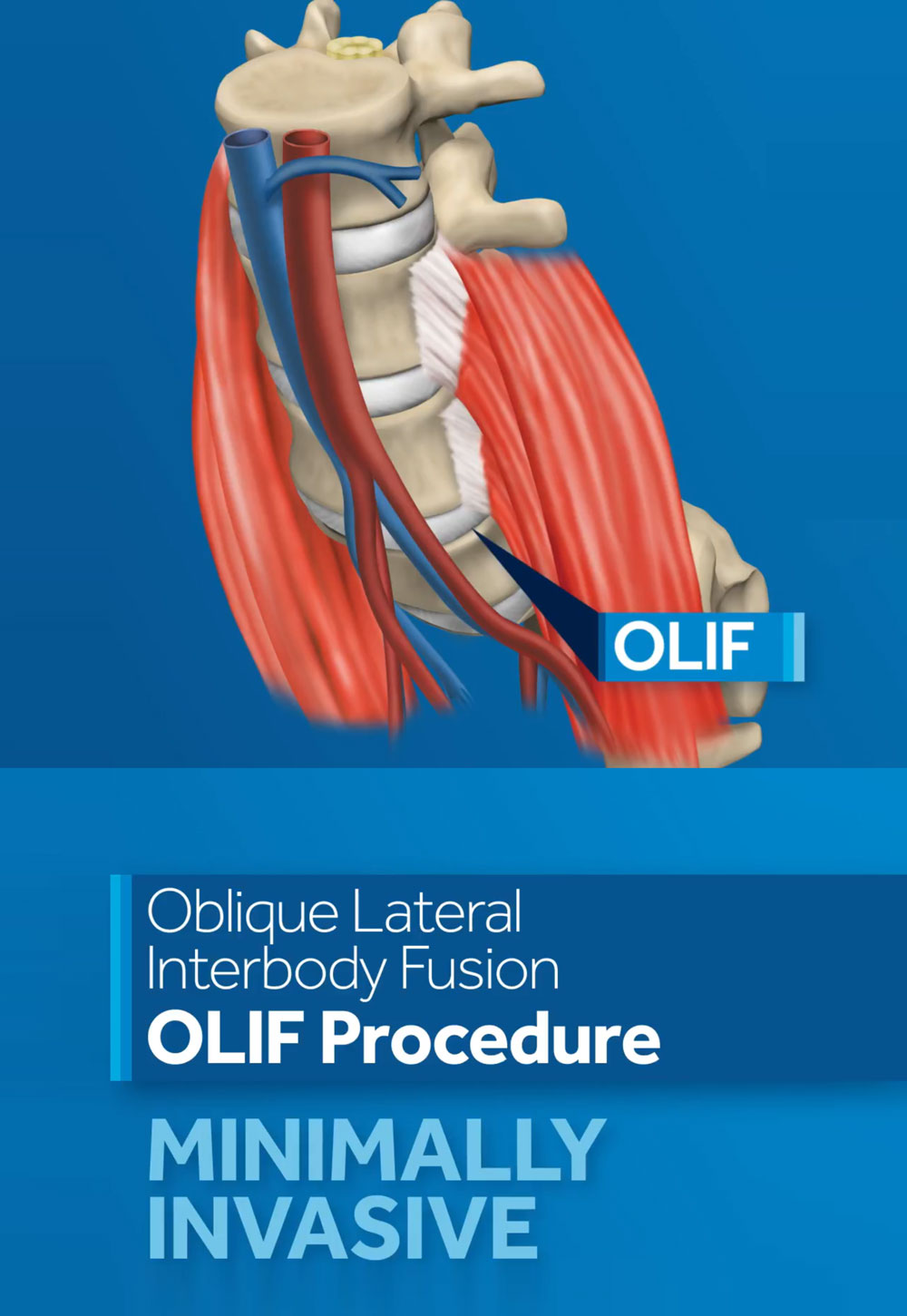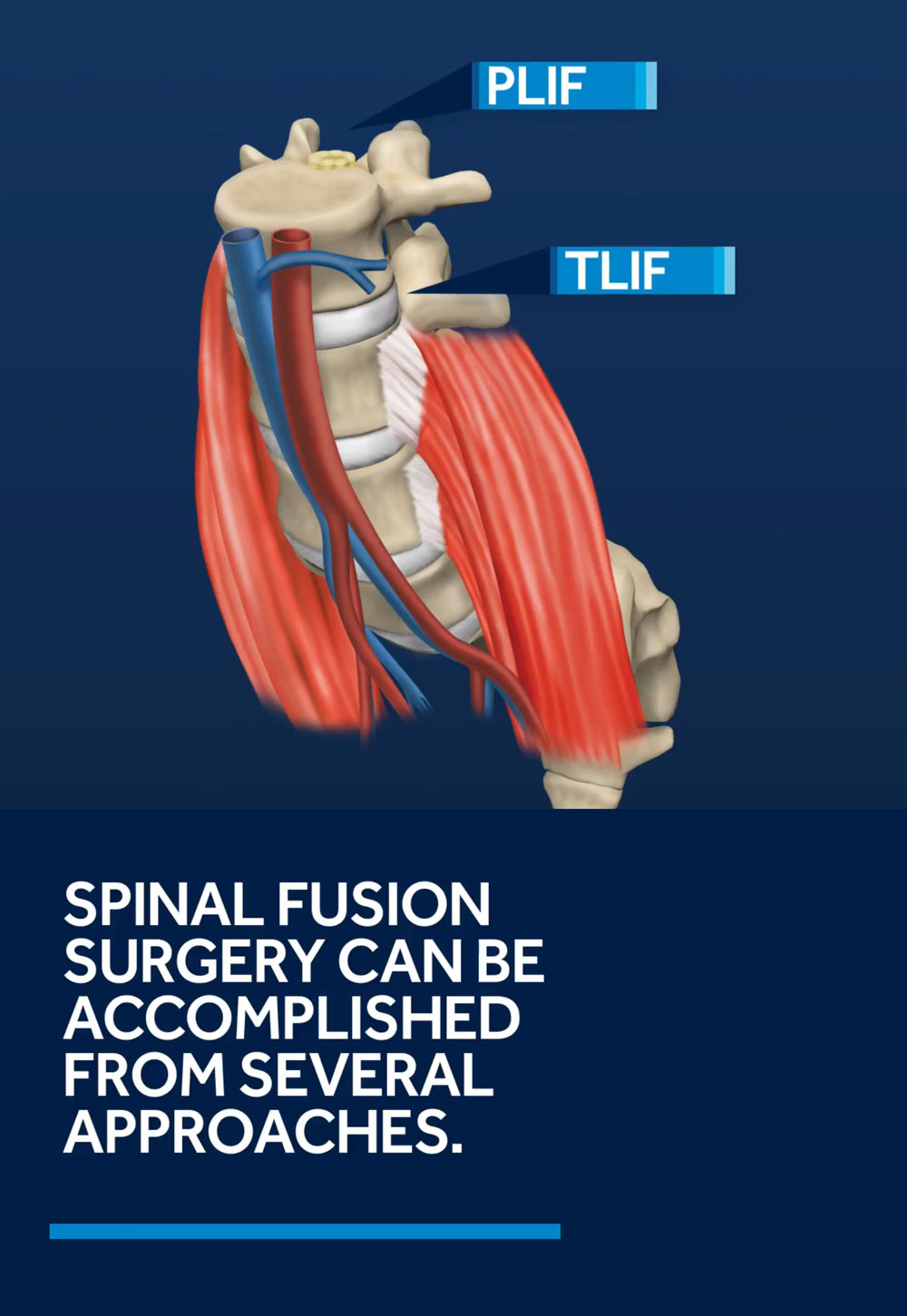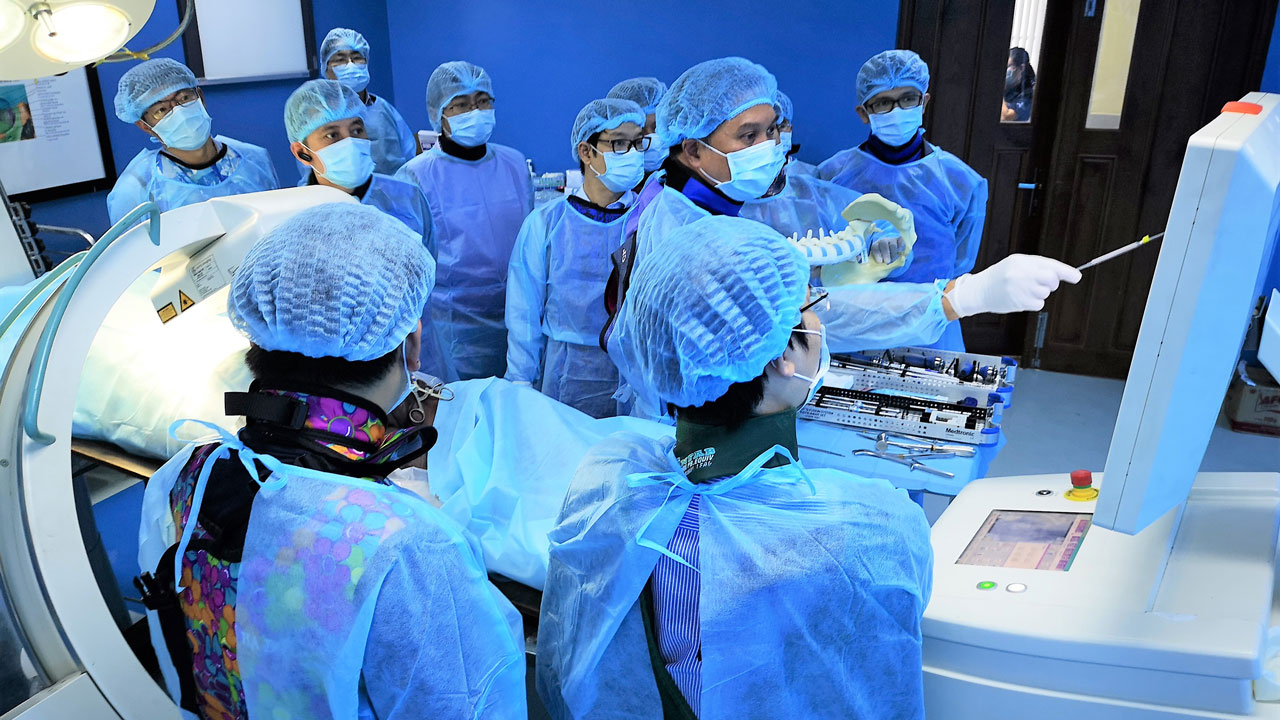Minimally Invasive
Surgery (MIS)

What is Minimally Invasive
Spine Surgery (MIS)?
Leading spine surgeons are welcoming new MIS techniques that benefit patients in many ways. For those who already tried small decompression surgeries like discectomy or laminotomy and experience a return of symptoms, another surgery may be required.
This can be a motion-preserving surgery like disc or facet replacement (if they are a candidate) or a fusion style surgery may be required. Recent advancements in OLIF and TLIF Fusion surgeries allow these to be performed as minimally invasive or percutaneous "keyhole" procedures, which have many patient benefits over traditional “open” surgeries.
This can be a motion-preserving surgery like disc or facet replacement (if they are a candidate) or a fusion style surgery may be required. Recent advancements in OLIF and TLIF Fusion surgeries allow these to be performed as minimally invasive or percutaneous "keyhole" procedures, which have many patient benefits over traditional “open” surgeries.
Why are Patients Interested in MIS Fusion?
Traditional spine surgery can be traumatic, requiring a long recovery in hospital and months away from work and an active lifestyle. If a fusion is required for the best outcome, patients want to minimise overall trauma and pain, and ensure the fastest possible recovery. Returning to a good quality of life is their No.1 priority.
Benefits of MIS Vs.
Open Fusion Surgery are:
- AReduces surgery time under anaesthesia
- BLess or No muscle and soft tissue cutting
- CLess risk of nerve damage and bleeding
- DFaster recovery time (up to 50%)
New Minimally Invasive Fusion Techniques
New Minimally Invasive Fusion Techniques
- 1Oblique Lateral Interbody Fusion (OLIF)
An OLIF (sometimes called OLLIF) is a newer lumbar surgery and is performed through the side. It minimizes cutting to muscles and uses a single port to access the disc space, fill it with bone material and then fuse the relevant vertebra together. This restores correct spine height, position and curvature, and fixes pain by decompressing nerves and restricting movement.
In Endoscopic OLIF surgery a small surgical port is used to allow access of the ‘corridor’ between the psoas muscle and anterior vasculature. This minimally invasive approach preserves the psoas muscle, avoids interaction with nerve structures, and patients benefit from less bleeding, less pain and a faster recovery. The number of established surgeons beginning to offer MIS OLIF is rapidly increasing by around 10% every year.
More Details
In Endoscopic OLIF surgery a small surgical port is used to allow access of the ‘corridor’ between the psoas muscle and anterior vasculature. This minimally invasive approach preserves the psoas muscle, avoids interaction with nerve structures, and patients benefit from less bleeding, less pain and a faster recovery. The number of established surgeons beginning to offer MIS OLIF is rapidly increasing by around 10% every year.

- 2Transforaminal Lumbar Interbody Fusion (TLIF)
A TLIF surgery is performed through the back. The spine is accessed through the foramen or opening that allows the nerves to exit the spinal cord. The damaged disc is partially removed so that a spacer can be inserted into the disc space. A bone graft is then inserted that envelopes the spacer to create a stable disc that results in permanent fusion and stability of the spine.
Endoscopic (keyhole) TLIF is a new minimally-invasive approach that uses smaller keyhole incisions of around 10-millimeters to access the spine. Without the need to strip muscle out of the bone, patients also benefit from less pain, less blood loss and can return to normal life in less time.
More Details
Endoscopic (keyhole) TLIF is a new minimally-invasive approach that uses smaller keyhole incisions of around 10-millimeters to access the spine. Without the need to strip muscle out of the bone, patients also benefit from less pain, less blood loss and can return to normal life in less time.

Our Surgeons are Pioneers in Minimally Invasive Surgery
We built Spine Connection to provide around-the-world access to faster, more affordable and superior spine treatment and surgery. This includes researching and identifying leaders in speciality fields and bringing them into our organisation to best help our patients.
Whilst renowned for their motion-preserving surgeries, our German Specialists also offer the very latest minimally invasive decompression surgeries. When it comes to larger reconstructive lumbar surgeries like OLIF & TLIF via Minimally Invasive and "Keyhole" access, our top specialists in Thailand are renowned for their advancements in this area.
Whilst renowned for their motion-preserving surgeries, our German Specialists also offer the very latest minimally invasive decompression surgeries. When it comes to larger reconstructive lumbar surgeries like OLIF & TLIF via Minimally Invasive and "Keyhole" access, our top specialists in Thailand are renowned for their advancements in this area.
- 1Dr. Verapan and the Bumrungrad Spine Instutute

The Bumrungrad Spine Institute is partnered with Germany’s Dr. Sebastian Ruetten as Asia-Pacific’s first and only training center for his MIS endoscopic techniques. Pioneered in Germany, this approach uses ‘keyhole surgery’ to reconstruct and stabilize damaged spines. Bumrungrad is regarded at the No.1 Hospital for Medical Travelers in the World, with over 1.1 Million+ patients per year, from over 190 countries.
- 2Dr. Tayard from the Bangkok Spine Academy

Dr. Tayard in collaboration with Samitivej Hospital Chinatown allows our price-conscious patients to receive the latest MIS techniques in a luxury boutique hospital environment. As a Medtronic instructor surgeon in the Asia-Pacific region, Dr. Tayard frequently travels to the USA, China, Australia, Korea and Malaysia to teach and guide other surgeons in these techniques. He is also vice-president of the Thai Spine Society.
We're here
to help.
Leave your details and we will contact you to answer your questions.
to help.
Leave your details and we will contact you to answer your questions.
Ask Our Doctors
Leave your details and we will contact you to answer your questions. We're here to help.
Join Our Youtube Channel
Watch videos showcasing the latest technologies and surgery techniques, and keep up to date with patient stories from around the globe.










